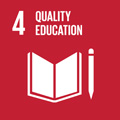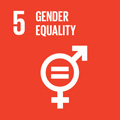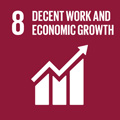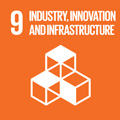- Docente: Simone Martinetto
- Credits: 6
- SSD: L-ART/03
- Language: Italian
- Teaching Mode: Traditional lectures
- Campus: Cesena
-
Corso:
First cycle degree programme (L) in
Sciences and Culture of Gastronomy (cod. 6681)
Also valid for First cycle degree programme (L) in Sciences and Culture of Gastronomy (cod. 5808)
Learning outcomes
At the end of the course, students will have acquired basic historical and critical knowledge of the role and identity of photography in the contemporary art and communication landscape. They will know how to use appropriate analytical methods to interpret and contextualise images, relating them to the cultural and artistic contexts to which they belong. Students will also be able to enhance the presence and meaning of photographic images in the design of visual storytelling.
Course contents
After an initial analysis of the three areas of photographic image interpretation (context, form, content) and an in-depth study of certain theoretical, philosophical and artistic categories of photography, we will explore the communicative possibilities of photography when applied to the “genre” of food photography. The course is designed to alternate between theoretical study and practical workshop activities in each lesson, during which food photos will be taken and work will be carried out in large or small groups.
Readings/Bibliography
Programme valid for attending and non-attending students:
1. A. PIERONI, Leggere la fotografia. Osservazione e analisi delle immagini fotografiche, Edizioni Edup, Rome (2006); second edition, Universale series, pp. 5-200 (the entire book except for the final chapter, “Attività”).
2. C. GISSEMANN, Food photography. Corso completo di tecnica fotografica, WS Edizioni White Star, Milan (2020). Study only pp. 6-87 (the first 5 chapters) and read the outline on p. 131. The other pages of the book can be used only if you find them useful for the photos you will be taking, but they will not be covered in the exam.
3. B. LUBAS, How to photograph food, Ilex, London (2020). Also available as an eBook. The book is in English but offers important insights. Only the following pages need to be studied: pp. 7-24, 36-41, 46-49, 74-75, 82-93, 102-111, 132-139, 159, 168-177. Carefully observe all the images in the book, which can be used as a source of inspiration.
4. MATERIALS that will be made available by the teacher and uploaded to TEACHING RESOURCES on VIRTUALE (please note: all uploaded materials simplify study or expand knowledge and may be the subject of questions during the exam).
5. To take the exam, each student must bring 3 PRINTED PHOTOGRAPHS TAKEN BY THEMSELVES on the day of the exam, which MUST FOLLOW THE INSTRUCTIONS GIVEN ON VIRTUALE. Good quality prints on A4 or 20x30cm photographic paper are recommended, but other types of paper and formats are also acceptable. As also indicated on Virtuale, in addition to bringing the 3 prints on the day of the exam, students must send the files of the same 3 photos to the teacher's email address by the evening before the exam day, so that the photos can be verified as originals.
Teaching methods
Interactive lectures, Socratic dialogue method, workshop-based teaching (learning by doing), cooperative learning, problem solving, flipped classroom, peer education.
Assessment methods
Interview.
The interview will take into account both the three photographs submitted and the answers to the questions asked by the teacher.
The score will be divided as follows:
- 1 to 15 points for the three photographs presented, for their “adherence to the assignment”, for the care with which they are created, playing with imagery, composition, use of light and other theoretical, creative and technical skills that are explained in the books in the bibliography or in the materials on Virtuale; in addition to this, the student's ability to describe their images in a coherent and engaging manner, to “read” them and link them to some of the topics covered in the books in the bibliography, both on a technical and theoretical-philosophical level, will also be assessed;
- 1 to 15 points will be awarded for answers to certain theoretical and technical questions on the exam syllabus in the bibliography and on the materials uploaded to Virtuale;
- honours will be awarded to students who, in addition to answering the questions correctly, are able to demonstrate a personal, critical or creative reworking of the exam topics or who are able to expand on the discussion with examples and knowledge drawn from their own personal culture.
Teaching tools
PPT, photographs, videos, professional photographic equipment (camera, lights, panels, etc.) for creating small sets.
Office hours
See the website of Simone Martinetto
SDGs




This teaching activity contributes to the achievement of the Sustainable Development Goals of the UN 2030 Agenda.
